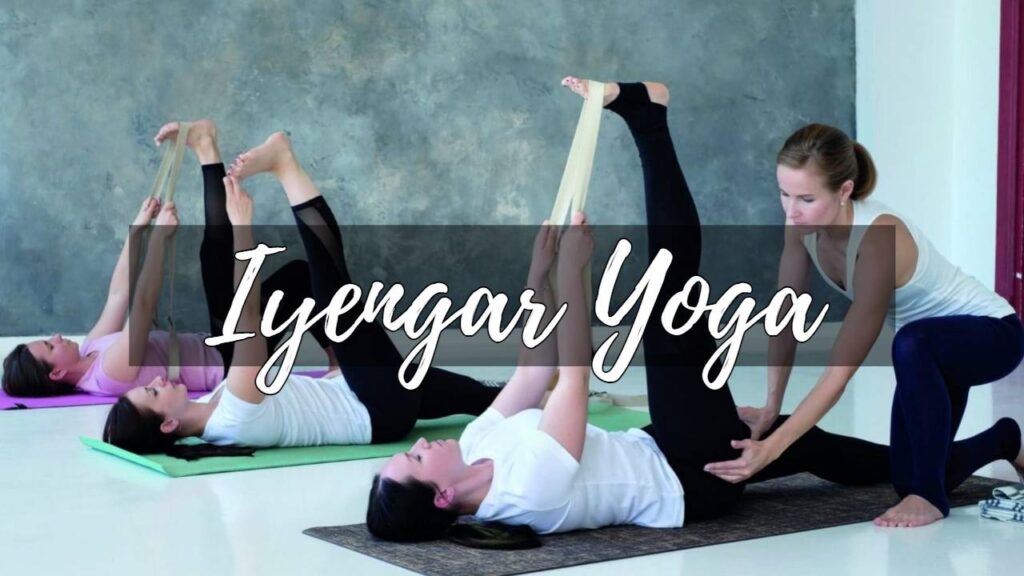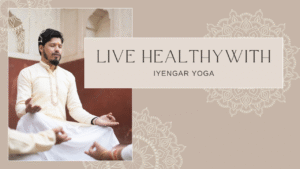yengar Yoga for flexibility offers a precise and therapeutic approach to improve your body’s mobility and joint health. Whether you’re a beginner or an experienced yogi, incorporating Iyengar Yoga for flexibility into your routine enhances your posture, muscle length, and spinal alignment. This guide on Iyengar Yoghttps://desayogi.com/iyengar-yoga-for-strength-and-flexibility/a for flexibility will help you achieve a more mobile, injury-resistant body.

Flexibility is crucial for daily movement, athletic performance, and injury prevention. Unlike fast-paced styles, Iyengar Yoga for flexibility uses props, alignment, and extended pose holds to gradually increase range of motion while minimizing the risk of strain.
What Makes Iyengar Yoga for Flexibility Ideal?
1. Use of Props for Deeper Stretching in Iyengar Yoga for Flexibility
Iyengar Yoga for flexibility is known for its props—blocks, straps, bolsters, and chairs. These allow practitioners of all levels to achieve optimal alignment and deeper stretches safely. Props make poses like Supta Padangusthasana (Reclining Hand-to-Big-Toe Pose) more accessible, aiding hamstring flexibility.
2. Alignment and Precision in Iyengar Yoga for Flexibility
Correct alignment prevents overstretching and ensures balanced flexibility development. Postures like Trikonasana (Triangle Pose) and Parsvottanasana (Intense Side Stretch Pose) are held longer in Iyengar Yoga for flexibility, giving muscles time to lengthen gradually.
3. Long Pose Holds in Iyengar Yoga for Flexibility
Holding poses for 1–3 minutes allows muscles and connective tissues to adapt and elongate. Iyengar sequences may include Paschimottanasana (Seated Forward Bend) or Adho Mukha Svanasana (Downward Dog) specifically to improve back, hamstring, and shoulder flexibility.
Benefits of Iyengar Yoga for Flexibility
A. Reduces Muscle Stiffness with Iyengar Yoga for Flexibility
Regular practice of Iyengar Yoga for flexibility stretches tight areas like the hamstrings, lower back, hips, and shoulders.
B. Improves Range of Motion through Iyengar Yoga for Flexibility
By working through safe, progressive sequences, practitioners can unlock more natural movement in joints and limbs using Iyengar Yoga for flexibility.
C. Prevents Injury Using Iyengar Yoga for Flexibility
Improved flexibility supports muscle balance and joint health, reducing injury risk in other workouts or daily tasks.
D. Enhances Circulation with Iyengar Yoga for Flexibility
Gentle stretching boosts blood flow, aids tissue repair, and promotes quicker recovery after physical activity.
E. Supports Mental Clarity Through Iyengar Yoga for Flexibility
By holding poses and focusing on breath, Iyengar Yoga for flexibility not only benefits the body but also soothes the mind.
Key Poses in Iyengar Yoga for Flexibility
- Supta Padangusthasana – Hamstrings & calves
- Adho Mukha Svanasana – Spine & shoulders
- Baddha Konasana (Bound Angle Pose) – Hips & groin
- Uttanasana (Standing Forward Fold) – Hamstrings & back
- Parsvottanasana – Hamstrings & hip extensors
- Viparita Karani (Legs-Up-the-Wall Pose) – Gentle inversion to release lower back
These poses in Iyengar Yoga for flexibility are often modified with props to ensure accessibility and comfort, especially for beginners.
FAQs About Iyengar Yoga for Flexibility
Q1: Can beginners improve flexibility with Iyengar Yoga for Flexibility?
Yes! Props and guidance in Iyengar Yoga for flexibility help beginners safely develop flexibility without overstretching.
Q2: How often should I practice Iyengar Yoga for Flexibility?
3–4 times a week can yield visible improvement in a month, though even twice a week offers benefits.
Q3: Is Iyengar Yoga for Flexibility better than other styles?
For those needing support, precision, or injury recovery, yes—it offers more structure and accessibility than vinyasa or power yoga.
Q4: Can Iyengar Yoga for Flexibility help with stiff joints?
Yes. Iyengar Yoga for flexibility improves joint mobility through supported, gentle movement that avoids excessive strain.
Conclusion: Embrace Iyengar Yoga for Flexibility
Incorporating Iyengar Yoga for flexibility into your wellness routine is one of the best investments you can make for your physical well-being. From improved posture and reduced stiffness to enhanced athletic performance and injury prevention, the benefits of Iyengar Yoga for flexibility are abundant.
Check out our Beginner’s Guide to Iyengar Yoga to build a strong foundation.
You can also explore external expert resources such as Yoga Journal or Harvard Health for more insights into yoga and flexibility.
Start slow, be consistent, and let Iyengar Yoga for flexibility gently unlock your body’s full potential.

